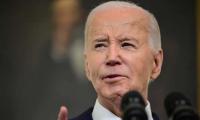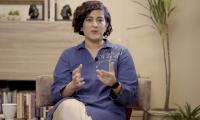As many as 6.5 million children in Sindh are not attending schools, which makes 44 per cent of the total children in the province between five and 16 years.
This has been revealed in a recent study titled ‘The Missing Third — An out-of-school study of Pakistani 5-16 year-olds’ conducted by the Pak Alliance for Maths and Science.
“The total population of five- to 16-year-old [children] in Sindh is 14,675,864. [And] 44 per cent of this population is reported [to be] out of school. This amounts to a total of 6,484,007 children unable to go to school in the province,” the study claims. It says that almost 100 per cent children of such children of five year have never been to school, as opposed to 63 per cent of all such children who are 16 years old. The dropout ratio rises steadily with age. It rises sharply between the ages of 10 and 11, and 14 and 16.
Highlighting reasons for this, the study reads that expenses on education is the basic factor why 95 per cent of the out-of-school children (OOSC) never attended schools while unwillingness of children is another primary contributing reason behind 30 per cent of the dropped out OOSC. Likewise, 19 per cent do not go to schools because they are required to help with work at home and outside.
Burden on schools
Of the 29 districts in Sindh, 21 districts have more than 44 per cent OOSC population. The enrolment rate in the state-run schools in Sindh is significantly high with 21 districts having 70 per cent or more of the enrolled children in government schools.
A total of 14 of the 29 districts of Sindh have been identified in the study as ‘highly state dependent’ districts for provision of education. They include Thatta, Kashmore, Tando Muhammad Khan, Sujawal, Badin, Shikarpur, Jacobabad, Tharparkar, Larkana, Mirpurkhas, Kamber-Shahdadkot, Umerkot, Matiari and Shaheed Benazirabad. These districts are home to 3,295,008 OOSC, which accounts for 51 per cent of the total OOSC population in Sindh.
All the six districts of Karachi have more than half of the enrolled students attending private schools. Karachi’s Korangi district has the highest proportion of children enrolled in private schools at 75 per cent.
Meanwhile, over 80 per cent of the enrolled students attend government schools in 15 districts of Sindh. The highest proportion of students who attend madrasas is in Tharparkar district with 10 percent, followed by Karachi’s District West with 6 percent and Karachi’s District East with 5 percent.
District-wise OOSC
Citing the latest data issued by the Pakistan Bureau of Statistics, the study says that 13 of the 29 districts of Sindh have the OOSC rate of more than 50 per cent. Seven districts with the lowest OOSC rate in Sindh include Hyderabad and the six districts of Karachi.
Thatta ranks worst in terms of the proportion of the OOSC as 71 per cent of children in Thatta district do not attend school while Kashmore ranks second with 63 per cent OOSC. Tando Muhammad Khan has 66 per cent OOSC, Sujawal 65 per cent and Badin 63 per cent.
In Karachi region, District Malir has 38 per cent OOSC population while District West has 30 per cent and District Korangi has 23 per cent. In District East and District South, 22 per cent children do not attend school. District Central of Karachi has the lowest ratio of OOSC.
17 districts have more out-of-school girls than boys as opposed to 11 districts with more boys out of school.
Karachi’s District West has an equal proportion of boys and girls who are out of school.
Policy implications
The report reads that after Balochistan, Sindh has the second highest proportion of 16-year-old children who have never attended school. It means that Sindh has a large population of young adults who have never been to school.
“The necessary steps include radical improvements in early years enrolments, and first-time enrolments for fast track programs for children between the ages of 10 and 16,” the study reads.
Analysing the statistics, the study suggests that there is a need to enrol children through drives and campaigns at early ages while developing programmes to curtail dropouts among higher age groups.
The image shows a tobacco company worker holding cigarettes. — AFP/FileHYDERABAD: An illegal cigarette factory...
This image shows the dead body. — AFP/FileAn incident unfolded in Quaidabad on Tuesday, resulting in one fatality...
Edhi Marine Services team is busy in a rescue operation in Karachi on March 17, 2024. — PPI An e-taxi driver...
Shah Abdul Latif University Khairpur building can be seen in this image. — Facebook/Shah Abdul Latif University,...
Representational image of a handcuffed man. — Pexels/FileHYDERABAD: A police operation was carried out in Hyderabad,...
A representational image showing a person handcuffed and standing behind bars. — AFP/FileThe SSGC has continued...







